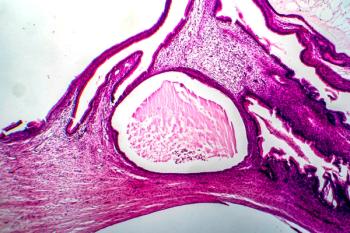
Practice Pearl 3: Emerging Combination Regimens for Ovarian Cancer Treatment
Bradley J. Monk, MD, FACS, FACOG, leads the discussion on upcoming combination therapy regimens with PARP inhibitors for the treatment of ovarian cancer.
Episodes in this series

Jennifer MacDonald, PharmD, BCOP: Let’s move into our last section, which is a brief discussion on the future direction of PARP inhibitors. There’s a lot going on and a lot coming for women with ovarian cancer. Dr Monk, you participated in some of the combination trials with chemotherapy. The first one we tried was veliparib, but I’m blanking on the name of the trial.
Bradley J. Monk, MD, FACS, FACOG: Yes, the VELIA trial.
Jennifer MacDonald, PharmD, BCOP: Yes.
Bradley J. Monk, MD, FACS, FACOG: Here’s the first thing. Rucaparib [Rubraca] is the only PARP inhibitor that doesn’t have a frontline indication. They have a study that’s similar to PRIMA but isn’t identical. That study is called ATHENA, and it will possibly report in January. That’s the first thing. The more options the patients have, the better.
The second is that can we add PARP inhibitors to checkpoint inhibitors. We have another part of ATHENA, which is rucaparib/nivolumab [Opdivo], and then we have another PARP inhibitor, niraparib [Zejula]/dostarlimab [Jemperli], and then olaparib [Lynparza] with durvalumab [Imfinzi] or olaparib with pembrolizumab [Keytruda]. That’s 4 studies that add PARP inhibitors to checkpoint inhibitors. Sometimes the checkpoint inhibitor is given with chemotherapy, and sometimes bevacizumab [Avastin] is required. ATHENA is in the maintenance phase. Suddenly, we have 4 studies, some just in the maintenance phase, some with bevacizumab, and some with a checkpoint inhibitor given with the chemotherapy. All of those will probably report in 2022 or early 2023. That’s what’s in the near term.
As you know, the checkpoint inhibitor has been very disappointing. When we added avelumab [Bavencio] to chemotherapy, it didn’t work. That’s my study. When Katie Moore added it to bevacizumab in the frontline, it didn’t work either. We have 2 negative frontline checkpoint inhibitor trials, but we’re hoping that PARP and checkpoint inhibitors will be the solution.
Jennifer MacDonald, PharmD, BCOP: Yes. And we can touch on this very briefly, but it doesn’t appear that ovarian cancer is very immunogenic, at least from what we’ve seen so far.
Bradley J. Monk, MD, FACS, FACOG: You think?
Jennifer MacDonald, PharmD, BCOP: From what we’ve seen, right?
Bradley J. Monk, MD, FACS, FACOG: Yes, from what we’ve seen.
Jennifer MacDonald, PharmD, BCOP: I can’t tell you the number of times that we get molecular profiles on patients—Sarah probably sees this all the time, too—where the PD-L1 [programmed death-ligand 1] is negative, TMB [tumor mutational burden] is low, MMR [mismatch repair]–proficient, and MSI [microsatellite instability] stable. We rarely get the patient who’s PD-L1 positive. Or if it is, it’s a CPS [combined positive score] of 1 and it isn’t super exciting for us. There’s definitely more to come with immunotherapy in ovarian cancer, and some combinations with PARPs. It will be exciting to see all that and the result to see if it makes a difference.
Bradley J. Monk, MD, FACS, FACOG: It will be. And that’s what I say. If it’s not bevacizumab or a PARP inhibitor, it doesn’t work in ovarian cancer. Hopefully we’ll get better.
Jennifer MacDonald, PharmD, BCOP: Yes, definitely. I want to briefly touch on the mechanistic rationale for why bevacizumab with PARPs have been of particular interest for people. Sarah, maybe you can talk about this. Why did we go in that direction? Why did the smart people go with that?
Sarah Hayward, PharmD, BCOP: I’m going to defer to Dr Monk. That would be better answered by him for a good, solid answer.
Bradley J. Monk, MD, FACS, FACOG: I’m going to defer to Jen because I don’t think there’s much rationale other than that they are 2 effective treatments. If it’s not bevacizumab or a PARP inhibitor, it doesn’t work. And the addition appears to be more additive than synergistic. The mechanisms of resistance aren’t overlapping. Jen, if you have some comments on it, tell me.
Jennifer MacDonald, PharmD, BCOP: Yes. I’ve seen some data published that bevacizumab can possibly induce an HRD [homologous recombination deficient] state, which can make PARP inhibitors more active.
Bradley J. Monk, MD, FACS, FACOG: OK.
Jennifer MacDonald, PharmD, BCOP: Obviously, that stuff is preclinical. It’s mouse models and things of that nature. But at least to some degree, my understanding was that came from some rationale or line of thinking that there may even be a role for that combination in the HRP [homologous recombination proficient] patient that you could possibly see. We haven’t seen those data or in patients because, like we said, PAOLA was in the HRD patient population, so that’s yet to come. But one of the things I’m hoping comes out of some of the data is that maybe that will be teased out and you’ll see a benefit for the combination in HRP, where I feel like we struggle to some degree in providing some options to patients that may help their long-term outcomes.
Bradley J. Monk, MD, FACS, FACOG: Yes. Very well said. Thank you.
Transcript Edited for Clarity
Newsletter
Stay informed on drug updates, treatment guidelines, and pharmacy practice trends—subscribe to Pharmacy Times for weekly clinical insights.

















































































































































































































